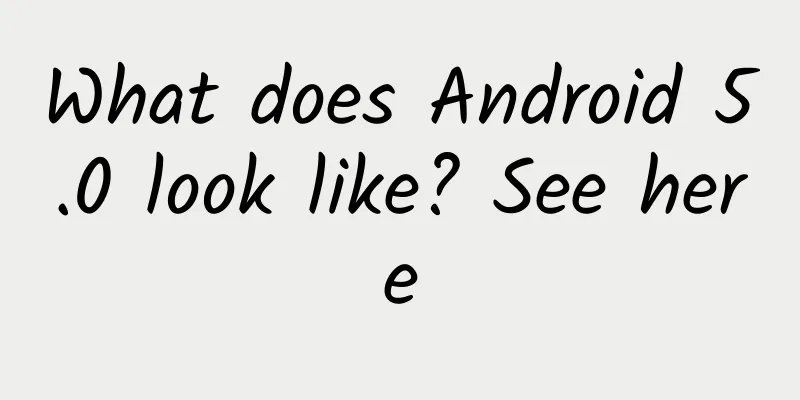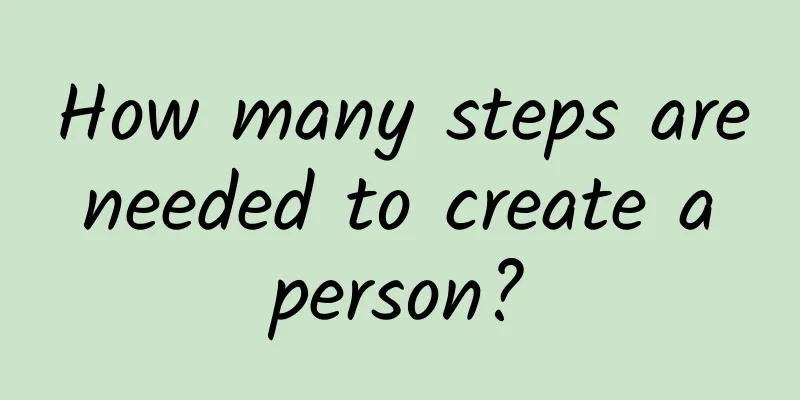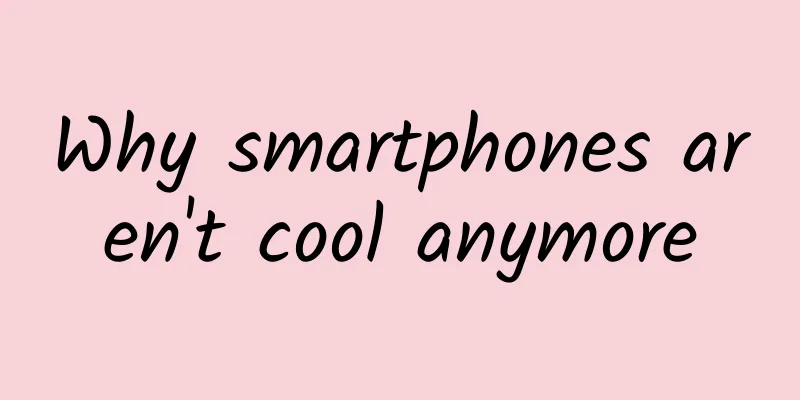What does Android 5.0 look like? See here

|
Android 5.0 Lollipop is one of the most anticipated product upgrades this year. It will bring a new design language, more user-friendly features, and the purest Google flavor. Recently, Google has released Inbox, the new version of Gmail, and the new version of Google Calendar, which was released today. All of these have made people realize the charm of Material Design. How much has Android 5.0 changed compared to previous versions? Let's see what Engadget says. Material DesignAs Engadget said, Google plans to use Material Design in all its products to make them look unified - unified visual design, unified visual feedback, unified operating experience, so that people will not feel confused when using Google's full range of products. Material Design, which is based on the "card" design prototype, hopes to simulate the feeling of paper material in the physical world in the virtual world, but has the characteristics of flexible expansion and scalability, making it look both smart and neat. Material Design can be evaluated from three aspects: vision, interaction and animation. The animation of the top bar is like a piece of paper being pulled out from the original plane, while other cards converge from all directions to form a whole. Google has built several layers in the virtual world, laying visual elements such as cards and buttons on them, and also using shadows and space to highlight the content. In addition, Google designers have also modified the Roboto font, making the font lines more rounded and the fonts wider, for a better reading experience. However, this is only for English fonts, and the changes in Chinese fonts remain to be seen. In terms of color, Material Design has become more colorful. Judging from the experience of using Inbox, Google prefers to use different colors to prompt different information. Under Material Design, everyone can know for sure whether they have pressed a button. Because every time a button is pressed, the button will bulge out, and then a ripple-like animation will spread out from the center of the button, giving users a very clear feedback. Therefore, users can know whether they have pressed something, and whether they have accidentally touched it, or whether they have not touched it at all. As for animation, Google's designers designed it to simulate the rules of physics, and the animation plays very fast, so as not to slow down the response speed of the entire app, but it is "modest" enough not to be too eye-catching. When you first see Android 5.0, you will feel that its main interface (Home Screen) is quite different: the style of the navigation keys at the bottom has changed, becoming very similar to the buttons on the PS game console controller, the triangle is the return key, the circle is the Home key, and the square is the multitasking key; the Google search bar adopts the Material Design design and is no longer transparent. Main InterfaceGoogle Now is still on the left side of the main interface. The interface is similar to the past, but the customized buttons such as reminders and settings are no longer at the bottom of the screen, but are integrated into the "hamburger" menu on the left side of the interface. Google uses the "hamburger" menu extensively to unify the entrance of functions, leaving more space for content display. The app drawer hasn’t changed much either, with a more Material Design style. In the multitasking management interface, in addition to being able to view the most recently opened apps, you can also view the most recently opened Chrome tabs - for ordinary people who open a small number of apps at the same time, this design is convenient, but for users who open 20 or 30 apps, this design is cumbersome. Fortunately, Google provides an option to return to the old version of the multitasking interface. Notification systemThe notification menu of Android 5.0 combines "Quick Settings" and notification messages. Swipe down from the top of the screen, and the notification menu will first display the latest notification. Then continue swiping down to pull out the quick settings. The adjustable options include Bluetooth, Wi-Fi, brightness, flash, screen rotation and other options. One of the design goals of Android 5.0 is to minimize distractions. This is reflected in the improvements to the "Notification Menu". The pop-up and display of "Notifications" will take into account what people are doing rather than interrupting them. For example, when receiving a call, Android 5.0 no longer jumps to the phone interface, but displays a "Phone" card at the top of the screen. Users can choose to answer or reject the call based on their needs at the time, but this phone card will not block the content currently displayed on the screen. Like Android 4.0, Android 5.0 "Notifications" are still operable, for example, you can reply directly to the "Mail" notification, or reply on the lock screen, and enter the "Mail" app directly from the lock screen. However, some people may not like the content of emails and messages to be displayed directly on the lock screen, so Google also provides an option to only display information such as "A new email has been received" on the lock screen notification. In addition, notifications in Android 5.0 have become more controllable - users can directly disable notifications from certain apps in the system settings, and can also adjust the notification display of certain apps to "priority", so that the notification of the app can be displayed above the "notification message", or the notification of the app can be displayed in "do not disturb mode". Do Not Disturb Mode and Volume ControlSpeaking of "Do Not Disturb Mode", Android 5.0 provides more adjustable options. For example, users can set different "Do Not Disturb" time periods to stop notifications of different calls, reminders, and appointments. They can also set a "white list" to see who can call during the "Do Not Disturb" period. Android 5.0 also improves the volume control details, and now provides users with three options: None, Priority, and All. If you choose None, the phone will not make any sound in any case; if you choose Priority, the phone will ring when you receive a call or text message; I believe there is no need to explain too much about the All option. performanceAndroid 5.0 now allows non-Neuxs 5 devices to use the "Ok, Google" voice wake-up function, as long as the phone contains a digital signal processor. However, unlike Moto X, you can't create your own voice commands to quickly start the phone. In order to improve the performance of the operating system, Android 5.0 supports 64-bit apps and hardware. Google said that all built-in apps now include 64-bit versions; in addition, it also provides a new ART (Android Runtime), which is enabled by default in the new version of Andorid. Google said that its performance has increased by 4 times compared to the past. In addition, Google's internal research and development codenamed Project Volta will help improve the power performance of Android devices. It will analyze what affects the power of the device and clean up those things that affect system performance. It will also provide users with a "power saving mode", which will cut off active background processes, reduce performance, etc., and can save 15% of power. SecurityAs more and more viruses attack, Android security has received more attention. Android 5.0 introduced SELinux Enforcing mode, which is used to continuously monitor the system and apps to ensure that there are no problems with the system. In addition, any Android 5.0 device will be automatically encrypted to improve security. Android 5.0 also introduces the Smart Lock feature, which can be used to unlock the phone with other Bluetooth devices (smart watches, headphones, etc.); in addition, it also introduces the "Guest Mode". If a friend wants to use your phone but you don't want him to see your privacy, you can activate this mode - and you can also customize which functions of the phone others can use in guest mode, such as prohibiting calls, text messages, and even not starting certain apps. otherAndroid 5.0 supports RAW format for taking photos; Built-in USB audio support, so the phone can use professional audio equipment, as well as up to 7.1 channel support; Android 5.0 also has a built-in game Easter egg similar to Flappy Bird, you can try it. Link to this article: http://www.ifanr.com/465934 |
<<: Lei Jun handed over the living room to Chen Tong
>>: Jack Ma and Zhang Chaoyang, the story of worshipping Buddha and believing in religion
Recommend
Thinking about graying out buttons
A few days ago, a colleague was working on a form...
Two tips to make your article interesting and not original
Believe that the copy you write is actually prett...
How to create content in the tourism industry? Check out these eight super exciting examples!
Leo Tolstoy once said, “All great literature can ...
The latest APP operation and promotion super strategy in 2015
In 2015, mobile Internet startup products face mo...
BYD: BYD Brazil sales exceeded 12,000 units in November 2024, ranking among the top ten in the local sales list for the first time
BYD's sales in the Brazilian market have incr...
Practice: Full process analysis to improve APP Push conversion rate
Recently, we are working on optimizing the succes...
Lei Jun and Zhou Hongyi battle against each other: Can Xiaomi defeat 360 again?
[[133571]] Three years ago, Qihoo 360 launched a ...
Many netizens "show off their backs" during the dog days of summer. Some benefited while others were hurt. Experts gave the following suggestions...
Recently, with the arrival of the dog days of sum...
The first wave of Spring Festival advertisements are now online. Do you want to go home after watching them?
The end of the year is approaching, and during th...
Concrete operations: basic operation skills and common tools!
I often hear Internet professionals say: "Pro...
Perfect Diary Traffic Growth Code Crack Guide
The sudden outbreak of the epidemic has disrupted...
Dear business elites, developing an iOS app is not that easy
[[143163]] Let’s get straight to the point: How m...
How to write a hit title that generates traffic?
How important is a good title? David Ogilvy, the ...









